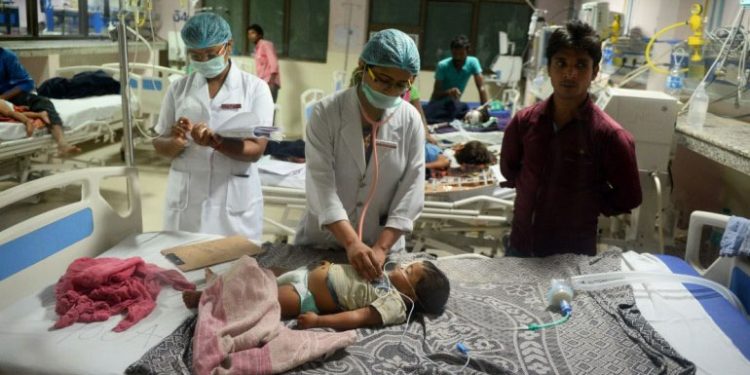Muzaffarpur/Patna: Shahbano’s tears refuse to stop. Three days ago, the Baruraj village resident admitted her eight-year-old daughter Farida at Muzaffarpur’s Shri Krishna Memorial College Hospital (SKMCH) with high fever. Her world came crashing down Tuesday, when the doctors declared her daughter dead.
Farida’s death hasn’t just broken her own family. It has also made East Champaran’’ Srinivas Rai nervous about his son, Sonu’s life. The five-year-old occupies the bed next to Farida’s at the SKMCH and his condition is far from stable.
Extreme anxiety and panic has gripped the SKMCH and Kejriwal Hospital in Muzaffarpur, where dozens of seriously ill children with symptoms of Acute Encephalitis Syndrome (AES) are undergoing treatment. The hospitals are reverberating with the cries and wailing of helpless parents as children continue to die of suspected AES.
Some 53 deaths have been reported in the past 10 days, though the Bihar health department has confirmed only 11 deaths of suspected AES during this period. Official figures put the number of reported AES cases this year at 48, up from 40 reported cases last year.
The state government has directed concerned officials to control the situation. But Bihar Health Minister Mangal Pandey categorically stated that most deaths were caused due to hypoglycaemia (loss of sugar in the blood) and only one child died of Japanese Encephalitis (JE).
However, his statement to a certain extent has been contradicted by Principal Health Secretary Sanjay Kumar who said that 11 children have so far died of AES this year. He informed that till date 27 cases of AES and JE have come to light.
According to health department officials they are trying to spread awareness to prevent an outbreak of AES. It said an advisory has been issued urging parents to prevent their children from playing under the sun when temperature is hovering between 42 to 43 degree Celsius. But then again this is not the correct directive to prevent AES.
The disease is a severe case of encephalitis transmitted by mosquitoes. It is characterised by high fever and inflammation of the brain. AES outbreaks are a routine in summer in areas in and around flood-prone north Bihar districts, where the disease is locally known as ‘Chamki Bukhar’ or ‘Mastishk Bukhar’. The epidemic mostly affects children from poor families, below 10 years of age.
Chief Minister Nitish Kumar said the health department was keeping close watch and had directed people about the preventive measures. “Ahead of rains (monsoon), every year this disease creates havoc. It is a matter of concern that every year children die due to it,” stated Kumar.
IANS






































